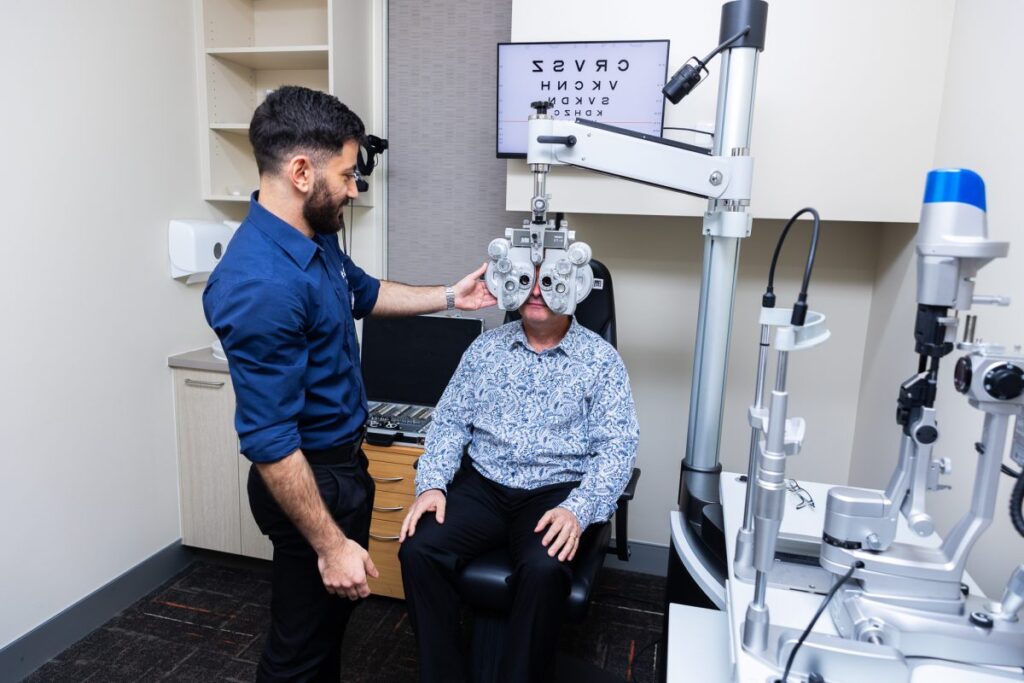Introduction: A New Outlook, A New Routine
For many, cataract surgery marks the beginning of a long-awaited return to clarity. It’s a moment filled with relief, hope, and a fair bit of curiosity—especially around the question: “When can I go back to work?”
The truth is, while the surgery itself is often quick and painless, the 30 days that follow are crucial. It’s during this time that healing takes place, vision stabilizes, and people start rediscovering the everyday joys of sight.
Whether you’re a retiree, a part-time worker, or someone juggling a 9-to-5, this article walks you through the recovery timeline—supported by real-life stories—to help you understand what returning to work might look like after cataract removal.
Week 1: The First Few Days
What You May Feel
Right after surgery, most people notice a gentle ache or a scratchy feeling in the eye. It’s not painful—just mildly uncomfortable. Light sensitivity is also common, and your vision might be blurry for the first couple of days. That’s normal.
Eye drops are your new best friend. They help fight off infection and keep swelling down. Your surgeon will explain how and when to use them—stick closely to the schedule.
Tips for Recovery
- Don’t rub your eyes
- Rest frequently—your body heals best when it’s relaxed
- Avoid screens or bright lights for long periods
- Skip heavy lifting or bending
Can You Work This Week?
If you work from home and can adjust your screen brightness, you might ease back into tasks by day 3 or 4—but only if your doctor agrees. For jobs that require driving, lifting, or lots of movement, it’s best to take the full week off.
See more: Sleep Study Perth Cost: A Comprehensive Guide
Real Story – Margaret, 67, Retired Teacher
“I thought I’d bounce back immediately, but the first few days surprised me. My eye felt a little gritty, and I couldn’t handle screen glare. I’m glad I didn’t try to rush back into anything. I just read a little, sat on the porch, and took it slow.”
Week 2: Adjusting to Clearer Vision
You’ll likely notice a turning point in week two. Things begin to sharpen. The world outside your window looks crisper, colors more defined. It’s often when people realize just how much they were missing before.

What You Can Resume
- Light walking
- Reading
- Watching TV
- Some screen work (if your eyes feel comfortable)
Still, continue protecting your eyes—wear sunglasses outdoors, avoid dust or wind, and don’t skip those eye drops.
Returning to Work?
Desk jobs or computer-based tasks can often resume in a limited capacity this week. Just take breaks often, use lubricating drops, and avoid eye strain. If you’re unsure, always check with your doctor.
Real Story – Raj, 58, Accountant
“I was nervous about using the computer again. I handle spreadsheets all day. My doctor told me to do 15-minute intervals at first. That helped a lot. By the end of week two, I was working half-days and feeling okay.”
Week 3: Gaining Confidence
By this point, the majority of healing has taken place. Vision continues to sharpen. If you experienced glare or halos around lights, they should begin to fade. Any lingering dryness or sensitivity should ease with continued eye care.
You Can Likely Do More:
- Driving (with doctor approval)
- Going to the grocery store
- Light chores around the house
- Attending meetings or in-person work (if safe)
Social Life Returns
You might feel more comfortable going to a restaurant or chatting face-to-face again. The emotional boost of seeing familiar faces clearly—sometimes for the first time in years—is hard to put into words.
Real Story – Luis, 72, Part-Time Driver
“When I finally got cleared to drive again, I cried a little. It’s my freedom. I still don’t drive at night much—just to be safe—but being able to help my daughter run errands felt amazing.”
Week 4: Seeing the World Differently
This is often the “wow” week. Vision becomes stable. Your eye care team may schedule a final checkup to see how your eye has healed and determine whether you’ll still need glasses. Some patients never go back to their old prescription.
What You’ll Likely Notice:
- Sharper contrast
- Brighter colors
- Improved depth perception
- A renewed sense of independence
For many, this week marks a full return to work or hobbies. But remember: your eyes are still adjusting. Stay consistent with eye care, and give yourself grace as you ease back into your routine.
Real Story – Nancy, 64, Boutique Owner
“My vision didn’t just get clearer. It got richer. I could see the fabric patterns in my shop so much better. I even started sewing again, which I hadn’t done in years. I didn’t realize how much cataracts were holding me back.”
FAQs
“Can I rub my eyes?”
No. Even if they itch, rubbing can disrupt healing. Use lubricating drops and gently dab near the area if needed.
“Will my vision keep improving?”
Yes, vision typically continues to refine over several weeks. Don’t worry if it’s not perfect by day 5.
“What if one eye feels different than the other?”
That’s common—especially if you’ve only had surgery in one eye so far. Your brain adapts quickly, and the second eye often catches up after its own procedure.
Conclusion: Listen to Your Eyes, Follow Your Pace
Cataract removal changes more than just how you see—it changes how you live. For some, work can resume within days. For others, it may take a few weeks. There’s no perfect timeline—it all depends on your job, your body, and your healing process.
The key is to go slow, listen to your eyes, and communicate with your eye care team. If you do that, chances are you’ll not only get back to work—you’ll see it with a whole new appreciation.
And that’s a win worth waiting for.

